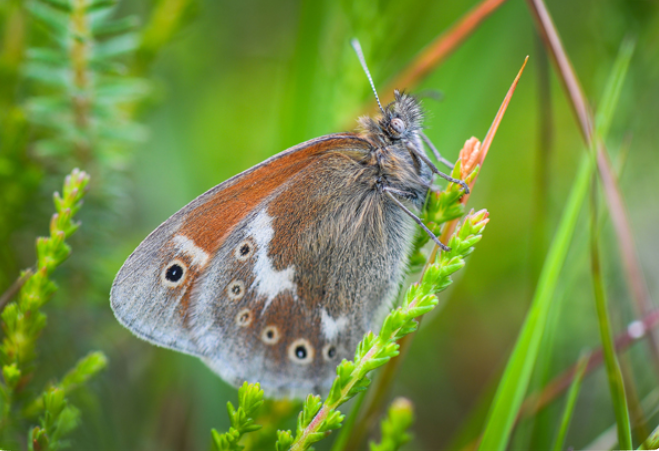Endangered bog butterfly successfully reintroduced after 100 years
The large heath butterfly returns to Heysham Moss in Lancashire after 100 years.
Four years of careful breeding work has come to fruition at Chester Zoo, after a rare species of butterfly was successfully reintroduced to one of its old habitats in a Lancashire bog after more than a century. The large heath butterfly is now endangered across northern England, where it was once a common sight, especially in the damp boglands in which it tends to make its home.
Now, however, scientists believe that they have established a stable wild colony of the fluffy brown insect at Heysham Moss – which is only the third location in the whole county where it lives.
"They've not been at Heysham for at least 100 years," Heather Prince, an invertebrate keeper at Chester Zoo told the BBC. "They've found museum specimens that date back to the 19th Century, labelled Heysham, so we know they were there historically."
The reason for the large heath butterfly's drop-off in numbers is simple; their peatland habitats were slowly but surely polluted, drained and removed. As Prince explained, measures which helped farmers and house-builders were lethal to all sorts of once-prevalent butterfly species.

"They used to be so common that one of its names was the Manchester argus. But obviously now in Manchester, you'd probably never ever see it," she said.
The plan to save the large heath butterfly started in earnest in 2004, when Lancashire Wildlife Trust started re-wetting Heysham Moss. Drainage ditches and scrub were removed, and the heath caterpillar's favourite food, hare's-tail cottongrass, was replanted.
"Back in 2012 we collected the foodplants – we gave them a year to take root and get established at the zoo," Ms Prince told BBC News. "Then in 2013 we collected the first group of females, and released them into prepared breeding enclosures."
From there, caterpillars were reintroduced into a netted enclosure each year, under careful daily monitoring from guides, who then let adult butterflies free one by one. Nearly 400 adults have now been released over three summers, and a full life-cycle, including mating, has been observed. The population will be supported until 2020, with the zoo maintaining its cottongrass enclosures for the sake of emergency – but the forecasts are excellent.
© Copyright IBTimes 2025. All rights reserved.






















